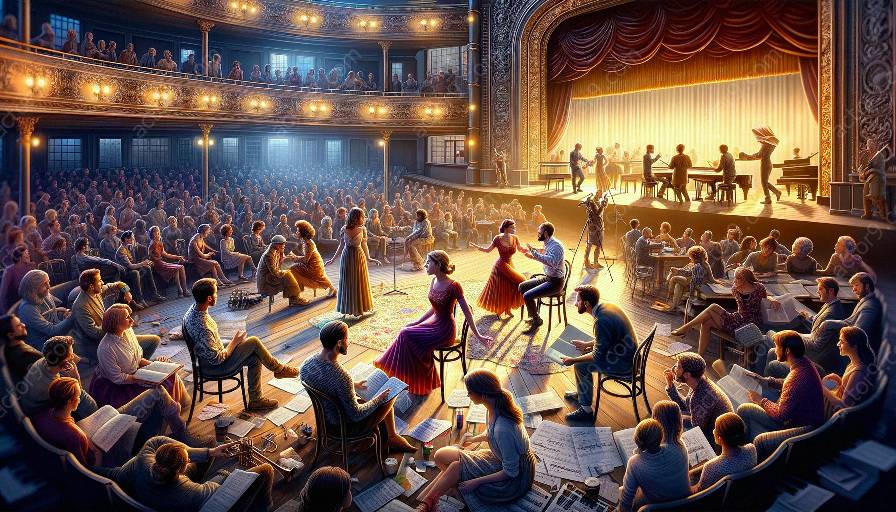Collaborative practices are at the core of the intricate world of musical theatre, bringing together diverse talents to create seamless and enchanting performances. In this comprehensive analysis, we delve into the dynamics, challenges, and impact of collaborative practices in musical theatre, shedding light on the intricate process of bringing music, acting, and storytelling together.
The Essence of Musical Theatre Collaboration
Musical theatre collaboration embodies the harmonious synergy between composers, lyricists, performers, directors, choreographers, and designers. Each contributor brings a unique artistry that intertwines to craft a captivating narrative conveyed through music, dance, and drama.
Understanding Collaborative Dynamics
The collaborative process in musical theatre demands a delicate balance of creativity, communication, and compromise. The seamless integration of music, choreography, and storytelling requires open dialogue, adaptability, and a shared vision among all involved.
Composing the Harmony
Composers and lyricists are tasked with creating the melodic and lyrical foundation of a musical, establishing the emotional depth and thematic resonance of the production. Their collaboration sets the tone and rhythm, influencing the narrative and character development.
Choreographing Movement and Emotion
Choreographers infuse the production with evocative movement and dance, adding layers of expression that amplify the storytelling. Collaborating with performers and directors, they bring the script and score to life through intricate choreography that captures the essence of the narrative.
Directing the Tapestry of Performance
Directors play a pivotal role in harmonizing the efforts of the creative team, envisioning the overall aesthetic and guiding the actors and crew. Their collaboration with designers, performers, and musicians shapes the visual and auditory tapestry of the production, ensuring a cohesive and impactful presentation.
Navigating Challenges in Collaboration
Collaborative practices in musical theatre are not without challenges. Balancing artistic visions, managing egos, and aligning creative direction amidst diverse perspectives can be a complex endeavor. However, the process of navigating these challenges fosters innovation, resilience, and ultimately, elevates the final performance.
Impacts and Legacy of Collaboration
The impact of collaborative practices reverberates beyond the curtain call, shaping the cultural and artistic legacy of musical theatre. Through collaborative efforts, timeless stories are brought to life, emotions are stirred, and audiences are transported to captivating realms of imagination and introspection.
Conclusion
Critically analyzing collaborative practices in musical theatre unveils the intricate tapestry of creative minds melding to produce awe-inspiring performances. The essence of collaboration lies in the orchestration of diverse talents, converging to craft masterful narratives that resonate with audiences for generations to come.




































